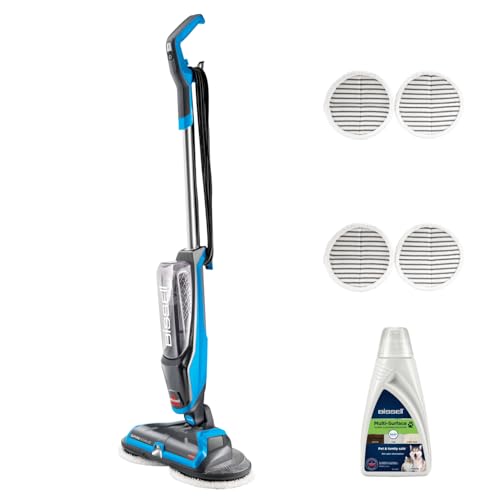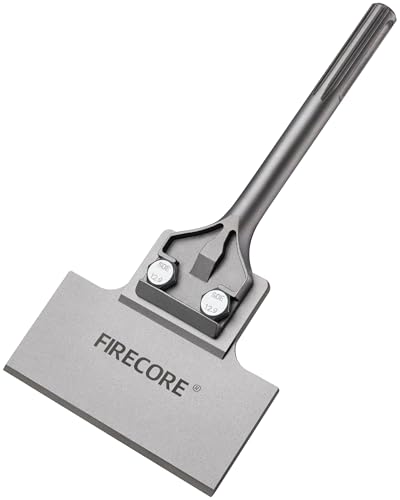




Having a clean and descaled kettle is essential for ensuring the best-tasting hot drinks and prolonging the lifespan of your appliance. Over time, minerals from the water can build up inside your kettle, causing limescale deposits that can affect the taste of your tea or coffee. Luckily, with just a few easy steps, you can easily clean and descale your kettle, leaving it sparkling clean and ready for use.
Firstly, before you begin cleaning your kettle, make sure it is unplugged and completely cooled down. Empty any remaining water and remove the kettle lid. For regular cleaning, you can use a mixture of water and vinegar. Fill the kettle halfway with equal parts water and vinegar, and let it sit for about an hour. The vinegar will help break down the limescale deposits.
After the vinegar and water mixture has been sitting inside the kettle, use a soft brush or sponge to scrub away any remaining limescale deposits. Scrub the inside walls of the kettle, as well as the heating element if it is accessible. Pay special attention to the spout, as limescale can often accumulate there. Rinse the kettle thoroughly with clean water to remove any traces of vinegar.
If a vinegar and water mixture doesn’t fully remove all the limescale, you can also use a descaling solution specifically designed for kettles. Follow the instructions on the descaling solution to ensure safe and effective use. Remember to thoroughly rinse the kettle after descaling to remove any residue from the solution.
In conclusion, keeping your kettle clean and descaled is a simple yet essential task to ensure the best-tasting hot drinks. Regular cleaning with a mixture of water and vinegar or using a descaling solution will help remove limescale deposits and keep your kettle in top condition. So, why wait? Follow the easy steps provided in this ultimate guide and enjoy a clean and descaled kettle in no time!
Why Is It Important to Clean and Descale Your Kettle?
Regularly cleaning and descaling your kettle is an essential task to maintain its performance and prolong its lifespan. Here are some reasons why it is important:
- Prolongs the lifespan of your kettle: Over time, minerals and limescale can build up inside your kettle, leading to a decrease in efficiency and potentially causing damage. Regular cleaning and descaling help remove these deposits, ensuring your kettle functions optimally for a longer time.
- Improves the taste of your beverages: Limescale buildup can affect the taste of your tea, coffee, or other hot beverages. By regularly cleaning and descaling your kettle, you can eliminate any unpleasant flavors caused by mineral deposits, ensuring a better-tasting cup of your favorite beverage.
- Prevents health risks: Limescale buildup not only affects the performance and taste of your kettle but can also have health implications. Bacteria can easily grow in the crevices of limescale, potentially contaminating the water you use for your beverages. Cleaning and descaling your kettle regularly helps eliminate these health risks.
- Saves energy and reduces electricity consumption: A kettle with heavy limescale buildup requires more energy to heat the water, leading to increased electricity consumption. By keeping your kettle clean and free from limescale, you can ensure it operates at maximum efficiency, thus saving energy and reducing your electricity bills.
- Keeps your kettle aesthetically pleasing: Limescale buildup can create unsightly stains on the interior and exterior of your kettle. Regular cleaning and descaling help maintain the overall appearance of your kettle, keeping it looking fresh and appealing.
Overall, cleaning and descaling your kettle regularly is important for its proper functioning, the taste of your beverages, your health, energy efficiency, and maintaining its aesthetic appeal. Follow the easy steps in this guide to keep your kettle clean and descaled for years to come.
Prevent Mineral Build-Up and Extend Kettle Lifespan
To prevent mineral build-up and extend the lifespan of your kettle, follow these simple steps:
- Use filtered or distilled water: Using filtered or distilled water can help reduce the mineral content in the water, preventing mineral build-up in your kettle.
- Regularly clean your kettle: Cleaning your kettle on a regular basis is essential to prevent mineral build-up. Follow the steps outlined in the previous section to clean and descale your kettle.
- Empty the kettle after each use: After each use, make sure to empty the kettle and rinse it with clean water. This helps remove any residual minerals and prevents build-up over time.
- Do not overfill your kettle: Overfilling the kettle can cause minerals to be trapped and accumulate in the kettle. Follow the recommended fill level to prevent mineral build-up.
- Avoid boiling water multiple times: Boiling water multiple times in the same kettle can concentrate the mineral content, leading to faster build-up. Try to use fresh water each time you boil.
- Regularly descale your kettle: Even with preventive measures, mineral build-up can still occur. Regularly descale your kettle using the steps outlined in the previous section to keep it clean and extend its lifespan.
- Store your kettle properly: When not in use, make sure to store your kettle in a cool, dry place. This helps prevent mineral build-up and prolongs its lifespan.
By following these steps, you can prevent mineral build-up and extend the lifespan of your kettle, ensuring it continues to provide you with hot and clean water for years to come.
Ensure Optimal Taste and Quality of Water

When it comes to enjoying a hot cup of tea or coffee, the taste and quality of the water you use can make all the difference. By following these simple steps, you can ensure that your kettle is clean and free from limescale build-up, resulting in a better tasting and higher quality water.
Step 1: Regular Cleaning
Regularly cleaning your kettle is essential to maintain its performance and prevent any unpleasant tastes or odors. Begin by emptying any leftover water from the kettle and rinsing it out with warm water.
Next, mix equal parts of water and vinegar or lemon juice in the kettle, filling it up to the maximum level. Let the mixture sit in the kettle for about an hour to dissolve any limescale deposits.
After an hour, boil the mixture in the kettle. Once the boiling process is complete, pour out the solution and rinse the kettle thoroughly with clean water.
Step 2: Descaling
If your kettle has a significant amount of limescale build-up, descaling is necessary. Fill the kettle with water up to the maximum level and add a descaling solution specifically designed for kettles.
Allow the solution to sit in the kettle for the recommended amount of time specified on the packaging. Then, boil the kettle and let it cool down completely before emptying and rinsing it thoroughly with clean water.
Step 3: Maintenance
To maintain the taste and quality of water, it is important to take preventative measures. Avoid overfilling the kettle, as this can lead to spillages and residue buildup. Additionally, replace the kettle’s filter regularly as instructed by the manufacturer.
It is also recommended to use filtered water or bottled water to reduce the amount of mineral deposits in your kettle. This will help prevent limescale build-up and maintain optimal taste and quality of water.
By following these easy steps, you can ensure that your kettle remains clean and free from limescale, resulting in a better tasting and higher quality water for your hot beverages.
Maintain Hygiene and Eliminate Bacteria Risks
When it comes to using a kettle, it’s important to maintain hygiene and eliminate any potential bacteria risks. Regular cleaning and descaling can help you achieve this goal. Here are some tips to keep your kettle clean and free from bacteria:
1. Clean the Exterior Regularly
Start by wiping the exterior of your kettle with a damp cloth or sponge. Make sure to remove any dirt, stains, or residue that may have accumulated on the surface. This will prevent bacteria from breeding on the outside of your kettle.
2. Descaling the Interior
Descaling is an important step to remove mineral deposits that can build up inside your kettle over time. These deposits can not only affect the taste of your water but also provide a breeding ground for bacteria. Follow the steps mentioned in the previous sections to effectively descale your kettle.
3. Use Vinegar or Lemon Juice
Vinegar and lemon juice are natural cleaning agents that can help eliminate bacteria in your kettle. Fill the kettle with a mixture of equal parts vinegar (or lemon juice) and water. Let it sit for an hour, then boil the solution. Allow it to cool before rinsing thoroughly.
4. Avoid Using Harsh Chemicals
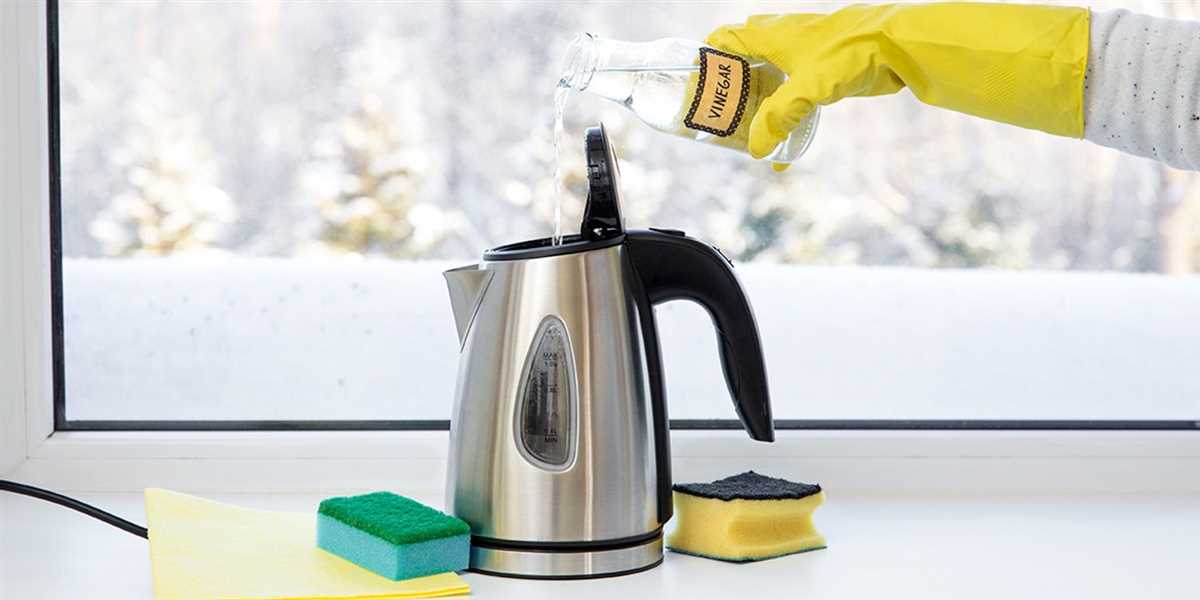
Avoid using harsh chemicals or detergents to clean your kettle, as they can leave residue or chemicals that may affect the taste of your beverages. Stick to natural cleaning agents like vinegar or lemon juice for a safe and effective cleaning process.
5. Regularly Replace Filters
If your kettle has a built-in filter, make sure to replace it regularly. Over time, filters can become clogged with debris, making it easier for bacteria to thrive. Check the manufacturer’s recommendations for the appropriate replacement interval.
6. Store Properly
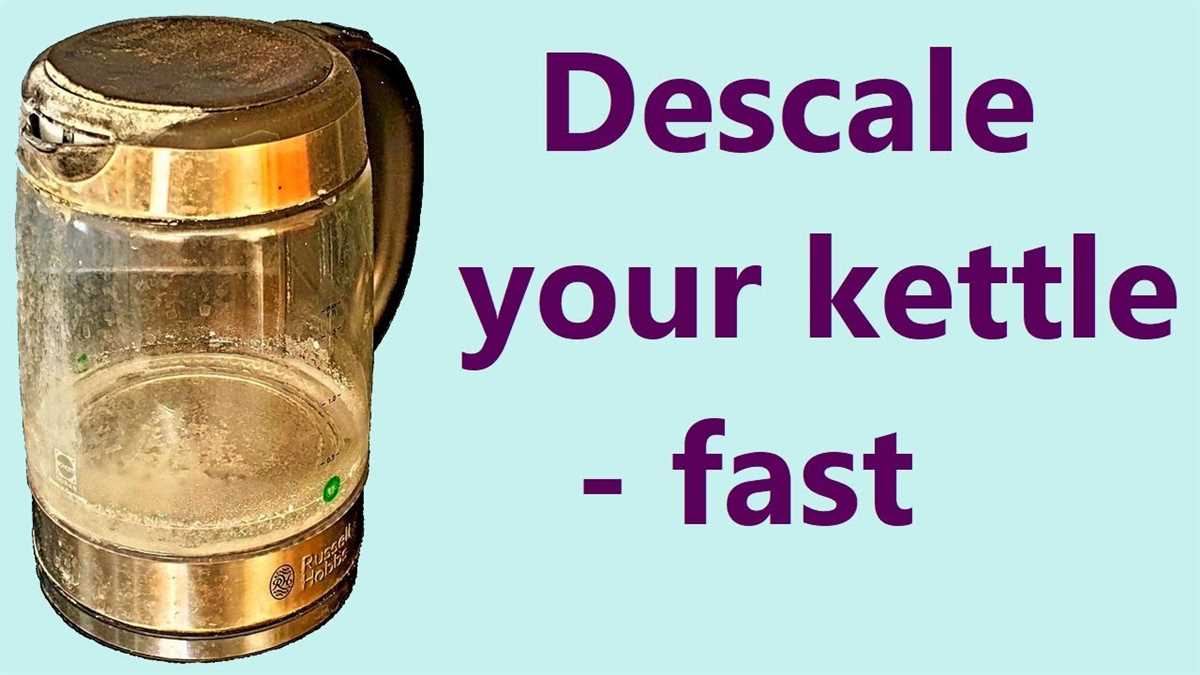
When you’re not using your kettle, it’s important to store it properly to prevent dust or other contaminants from entering. Make sure your kettle is dry before storing it in a cool and dry place. This will help maintain its cleanliness and reduce the risk of bacteria growth.
7. Avoid Overfilling or Underfilling
When using your kettle, make sure you don’t overfill or underfill it. Overfilling can cause water to spill and accumulate in the base of the kettle, creating a breeding ground for bacteria. Underfilling can cause the kettle to overheat, which can also lead to bacterial growth. Follow the manufacturer’s recommended water level guidelines.
By following these simple steps, you can maintain the hygiene of your kettle and eliminate any potential bacteria risks. Enjoy clean and fresh-tasting water every time you use your kettle!
Improve Energy Efficiency and Reduce Electricity Consumption
1. Use the Right Size Kettle

Choosing a kettle with the right capacity for your needs can help improve energy efficiency and reduce electricity consumption. If you often find yourself boiling more water than necessary, consider downsizing to a smaller kettle. On the other hand, if you frequently have to run multiple kettle cycles to meet your needs, consider getting a larger kettle to save energy.
2. Opt for a High-Quality Insulated Kettle
Investing in a high-quality insulated kettle can significantly improve energy efficiency. Insulated kettles are designed to retain heat for longer periods, reducing the need for reboiling. Look for kettles with thick insulation and double-walled construction to minimize heat loss and save electricity.
3. Keep Your Kettle Clean and Descaled
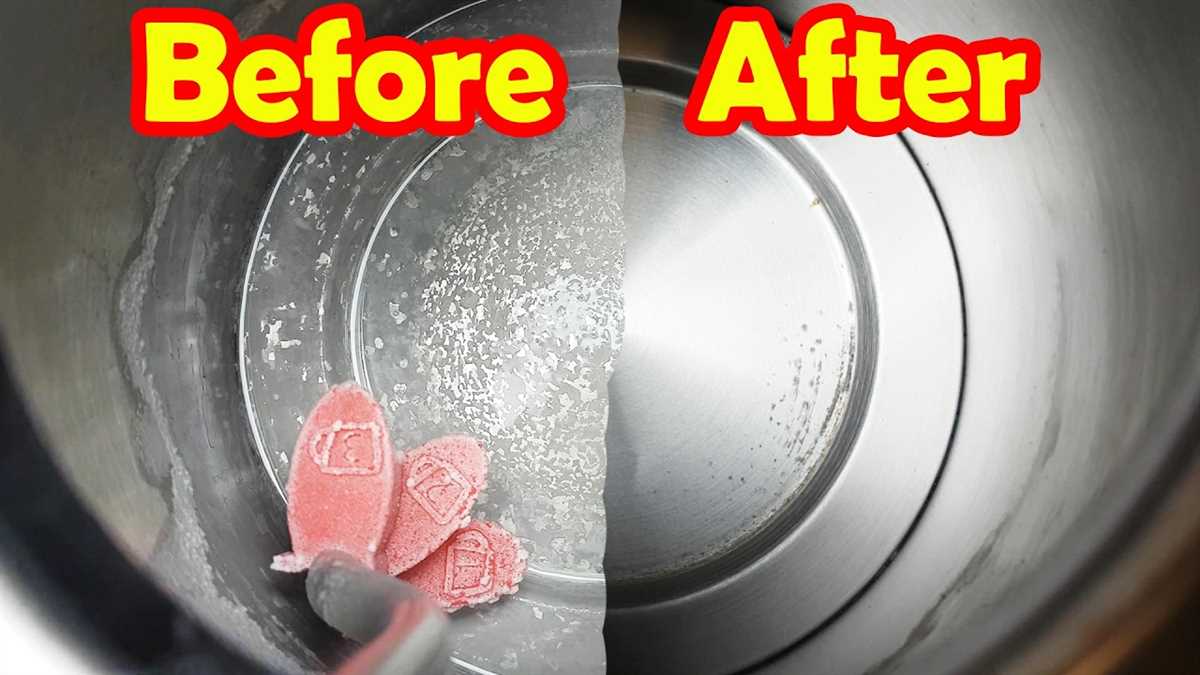
A clean and descaled kettle functions more efficiently, reducing electricity consumption. Regularly clean your kettle to remove limescale buildup, which can affect its performance. Follow the easy steps outlined in our ultimate guide to clean and descale your kettle effectively.
4. Utilize a Lower Wattage Kettle
Kettles with lower wattage consume less electricity during the boiling process. Look for kettles with a lower wattage rating, such as 1500 watts or below, to reduce energy consumption. While lower wattage kettles may take slightly longer to boil water, the energy savings can add up over time.
5. Fill Only the Required Amount of Water
Boiling excess water not only wastes electricity but also increases boiling time. Be mindful of the amount of water you pour into the kettle and only boil the required amount. Using just what you need can significantly reduce energy consumption and save money on your electricity bills.
6. Consider Using a Stovetop Kettle
If you’re looking to further reduce electricity consumption, consider using a stovetop kettle instead of an electric one. Stovetop kettles generally require less energy to heat water compared to electric kettles. Just be cautious when using gas or open flames on stovetops.
7. Compare Energy Efficiency Ratings

When purchasing a new kettle, look for models with high energy efficiency ratings. These ratings provide information on how efficiently the kettle uses electricity. Choose a kettle with a higher energy efficiency rating to ensure you’re minimizing energy consumption.
8. Use a Tea Cozy or Insulated Cover
After boiling your water, using a tea cozy or insulated cover can help maintain its temperature for longer periods. This reduces the need to reboil the kettle if you’re not going to use the hot water immediately. A tea cozy or insulated cover can also add a decorative touch to your kettle.
9. Unplug Your Kettle When Not in Use
Even when not actively heating water, electric kettles can continue to draw a small amount of standby power. To further reduce electricity consumption, unplug your kettle when it’s not in use. This simple habit can help save energy and reduce your environmental impact.
10. Upgrade to a Smart Kettle
Consider upgrading to a smart kettle that offers energy-saving features. Some smart kettles can be controlled remotely through smartphone apps, allowing you to turn them on or off as needed. Look for kettles with energy-saving modes or programmable timers to minimize electricity usage.
By implementing these easy steps, you can improve energy efficiency, reduce electricity consumption, and contribute to a more sustainable future.
Easy Steps to Clean and Descale Your Kettle
Gather the supplies you’ll need:
- Vinegar or lemon juice
- Water
- A scrub brush or sponge
- A cloth or towel
Step 1: Prepare the descaling solution
Fill your kettle halfway with equal parts vinegar and water, or alternatively, lemon juice and water. Make sure there is enough solution to cover the affected areas.
Step 2: Let the solution sit
Allow the vinegar or lemon juice solution to sit in the kettle for about an hour. This will give it time to break down the mineral deposits and scale buildup.
Step 3: Scrub the interior
Using a scrub brush or sponge, gently scrub the interior walls of the kettle. Pay extra attention to any areas with visible scale or deposits. If necessary, you can use a small amount of baking soda to help remove stubborn stains.
Step 4: Rinse the kettle
Fill the kettle with clean water and pour it out to rinse away any remaining vinegar or lemon juice solution. Repeat this step a few times to ensure all traces of the cleaning solution are removed.
Step 5: Wipe the exterior
Use a damp cloth or towel to wipe down the exterior of the kettle, removing any dirt or residue.
Step 6: Boil fresh water
Fill the kettle with clean water and bring it to a boil. Discard the water and repeat this step a few more times to ensure any residual taste or smell from the cleaning solution is eliminated.
Step 7: Maintain regular cleaning
To prevent scale buildup and keep your kettle in good condition, it’s important to clean it regularly. You can do this by following the steps above every few months, or as needed depending on your water quality.
| Do | Don’t |
|---|---|
|
|
FAQ
What is the best way to descale a kettle?
The best way to descale a kettle is by using a mixture of vinegar and water. Fill the kettle with equal parts vinegar and water, and let it soak for an hour. Then, boil the mixture, empty the kettle, and rinse it thoroughly.
Can I use lemon juice instead of vinegar to descale my kettle?
Yes, you can use lemon juice instead of vinegar to descale your kettle. Lemon juice contains citric acid, which helps break down the limescale deposits. Simply fill the kettle with lemon juice and water, let it soak for an hour, then boil and rinse.
How often should I descale my kettle?
The frequency of descaling your kettle depends on the hardness of your water and how often you use the kettle. On average, it is recommended to descale your kettle every 1-3 months. If you notice limescale buildup or a decrease in efficiency, it’s a sign that descaling is needed.
What is the purpose of descaling a kettle?
The purpose of descaling a kettle is to remove limescale deposits that can build up over time. Limescale is a hard, chalky deposit that forms when water with high mineral content is heated. Descaling your kettle helps maintain its performance, extend its lifespan, and ensure that your drinks taste better.
Can I use a descaler specifically designed for kettles?
Yes, you can use a descaler specifically designed for kettles. These descalers are formulated to effectively remove limescale without causing any damage to the kettle. Follow the instructions provided with the descaler for the best results.









